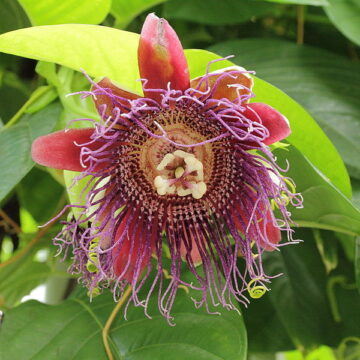Description
OFFERING LIVE COFFEE ROBUSTA PLANTS IN ADDITION TO ARABICA, ARABICA (INDIAN), KONA & CATURA.
WHOLESALE & DROPSHIP AVAILABLE
Coffea Canephora, also known as Coffea Robusta, is a hardier, more disease-resistant species than the more popular Coffea Arabica. It originates from western Africa. While the coffee produced from canephora beans is generally considered to be lower quality than that produced from Arabica beans, it does have several advantages over Arabica. For one, it can be grown in conditions that are not ideal for Arabica. It also contains double the caffeine of Arabica and has beans that are more “Robust.” It is often blended with Arabica to reduce the acidity of the coffee or to increase the “crema,” particularly when making espresso. Like Arabica, trees left untrimmed can grow to heights of thirty feet. However, plants can easily be grown indoors as houseplants if pruned. Cuttings can be used to propagate new plants.
Growing Information: Sow your seeds about oe an inch below the surface of soil and keep it lightly moist. Too much moisture will cause the seeds to rot. Potting soil with some perlite added in for drainage will or it can be mixed with sand and compost. Germination can take a while, so you may choose to cover your planted seeds with clear plastic to keep in moisture. Otherwise, you will have to mist the soil when it is at risk of drying out completely. Another option is sow your seeds in a sealable container or sandwich bag filled with either moist sand or the same soil mixture you will use to grow your plants. The advantage of using sand is that it is less likely to cause rot, but if your moisture level is correct that shouldn’t be a big concern. Check periodically to see when your seeds have sprouted. When you see a root popping out from the seed coat, plant the seed level with the soil in its own container with root facing down. The advantages of this method is that it saves space while the seeds are waiting to germinate and it allows you to position the seed in the exact direction it should be growing. Be sure that the seed is not packed too tightly so that it can rise easily out of the soil as it grows. The seedling is still at risk of rotting until the seed coat is off, so be sure not to over water. The seed has is a papery outer layer and a hard shell underneath, which you may need to gently assist with the removal of if it is not coming off. In warm climates, plants can be safely transplanted outdoors in a semi-shaded location after they are about 18”. Indoors, simply keep it near your window (preferably south, east or west). Feed the plants every two weeks from spring through fall and once a month during the winter with a 10-10-10 fertilizer. Allow the soil to dry out between waterings. Ideal humidity is around 50%, but is not essential.
Our plants are seedlings grown from seed. Growing from seed can be slow and tricky. These seedlings will save you significant time and possible failure growing from seed for not much more than a pack of seeds. Multiple plants quantities may be sent in compots to save on shipping. These seedlings typically transplant easily. Seedlings will range in size depending on stock.
In purchasing, international buyers agree to assume the risk of arrival of all items. We cannot replace lost or seized items. You will be required to confirm that you agree to these terms before items can be sent.







